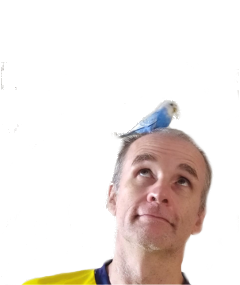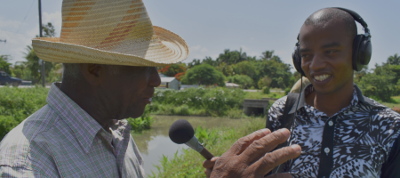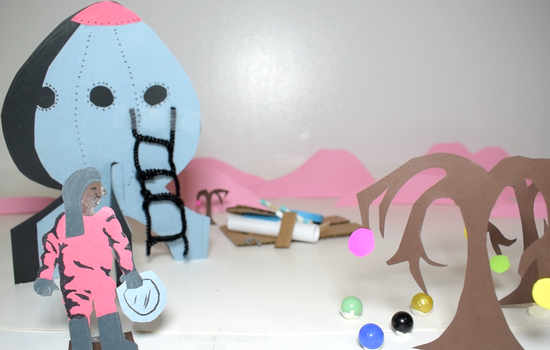
Planting marble trees on Mars
Meet Jasmine. She's just inherited her grandfather's marble plantation on Mars and she's excited to start her new life. But oh no! The marble planting machine is in pieces. Can you help her repair it and plant marble trees before the winter sandstorms arrive?
Jasmine's story, which I created for the Steamoji academy, is an example of anchored learning, a teaching model in which the lesson is embedded into a story in the form of a problem. Students learn to identify the problem, and find solutions that bring the story to a satisfying close. Any data necessary to solve the problem should arise naturally from the settings, the characters and the plot. Anchored learning -- by that name, at least -- was first developed in the US by a research group that used short video episodes to pose math problems that students would then use to get characters out of scrapes. In one episode students had to calculate if a character stranded on a boat had enough gas to get home before sunset (CTGV, 1993).

Jasmine's problem is considerably more complex. She needs to build a machine that will distribute marble "seeds" across a field. (I came up with the idea after a trip to rural Veracruz where Nahuatl farmers showed me an ingenious, homemade device for planting corn.) The students are given all the same materials she has on the planet -- straws, BBQ skewers, popsicles sticks, cardboard, etc. -- plus some plans, nailed to a nearby marble tree. In the first episode of the story, students use the plans to build all the assorted parts and assemblies. It is not obvious at this point, how the the machine works. In the second episode, they put the parts together as the ominous storm clouds draw nearer. By the end it becomes clear that the machine uses a cam and drive wheel mechanism, which they have seen in earlier projects, and they plant their marbles across the planet.
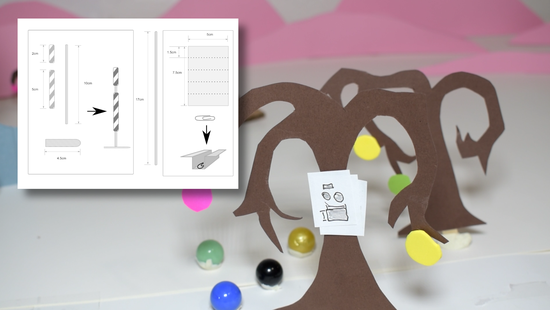
According to the original anchored instruction concept, students should have autonomy to solve the problem any way they like, effectively writing the story's ending for themselves. The idea is to promote general reasoning and problem solving skills "because there is considerable evidence that today's students are not particularly strong in these areas."(Crews et al., 1997) Jasmine's story is structured as a self-guided lesson, with no facilitator to keep students on track, so it can't offer the same autonomy. Students must follow the plans given to them. But the cam-based solution only becomes clear as the student begins assembling, a slow revelation that parallels the unfolding of a story. My intention is that students engage with the engineering problem in the same way a reader anticipates the plot of a good book at each page turn.
In fact, I think the benefit offered by anchored learning of this kind lies deeper than just developing particular skills. Bruner distinguished between two types of knowledge: "paradigmatic" or scientific knowledge or systems of logical and mathematical inference, and "narrative", the cause and effect, the morality and the subjectivity of everyday life (which, to a child, includes fantastical stories like marble-planting on Mars) (Flynn & Hardman, 2019). To a child, these types of knowledge must feel very different: the one, diagrams and colourless concepts, spoken by a teacher, the other, the world of meaning, doubt and anticipation. It may not be obvious that the two have anything to do with each other. I hope that an anchored story like Jasmine's shows how they can.
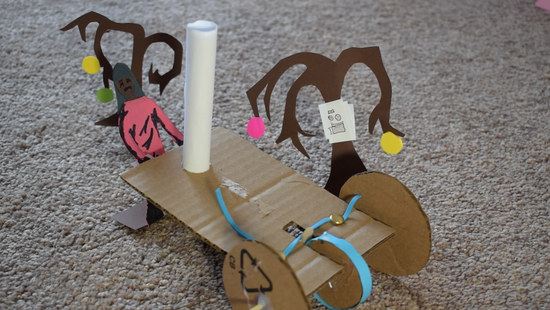
References
Flynn, S., & Hardman, M. (2019). The Use of Interactive Fiction to Promote Conceptual Change in Science. Science & Education. doi:10.1007/s11191-019-00032-6
Crews, T., G. Biswas, S. Goldman y J. Bransford (1997). Anchored interactive learning environments. International Journal of Artificial Intelligence in Education 8, pags. 142-178.
Cognition and Technology Group at Vanderbilt (CTGV) (1993). Anchored instruction and situated cognition revisited. Educational Technology, 33 (3), 52-70.
